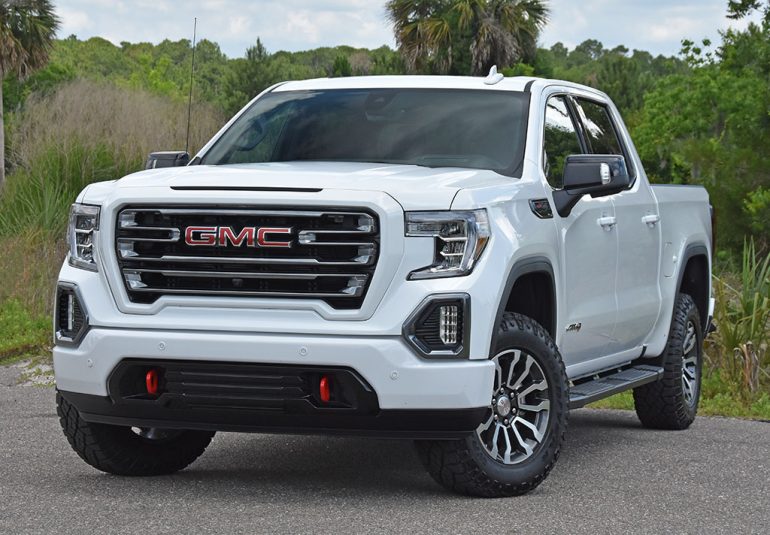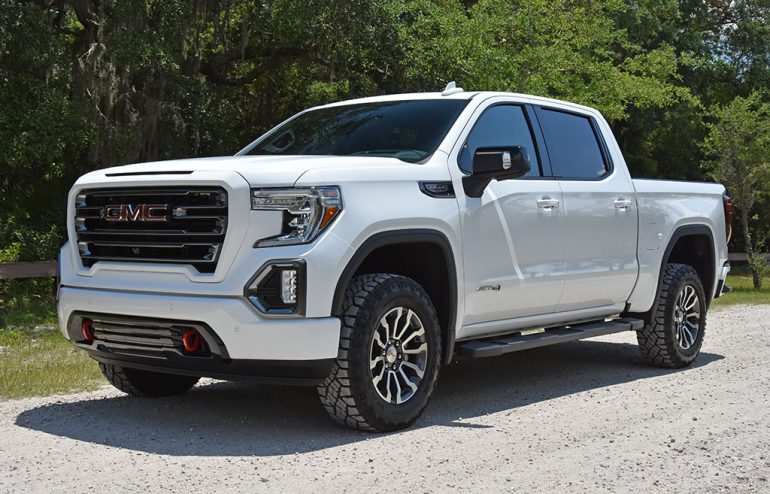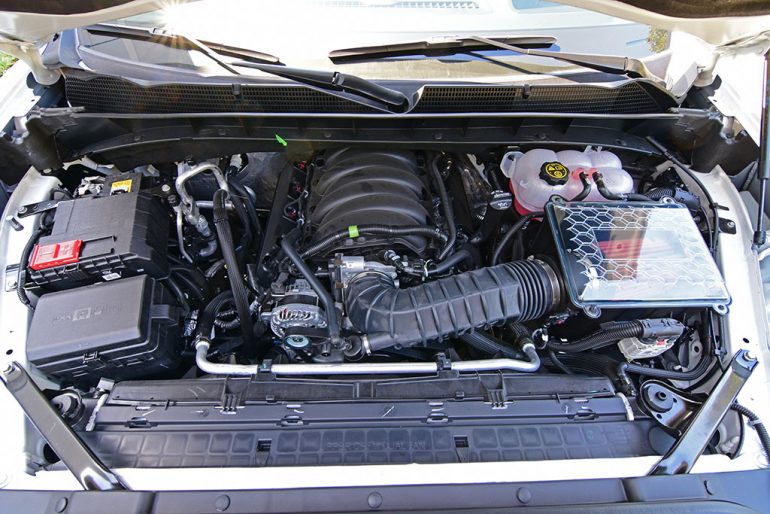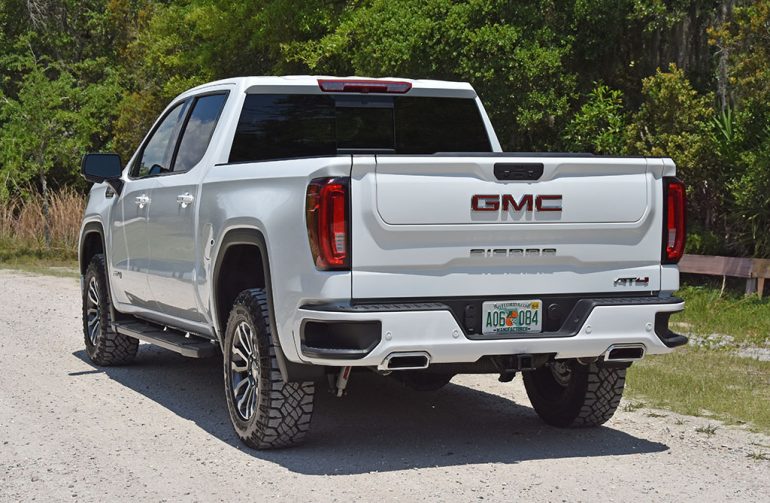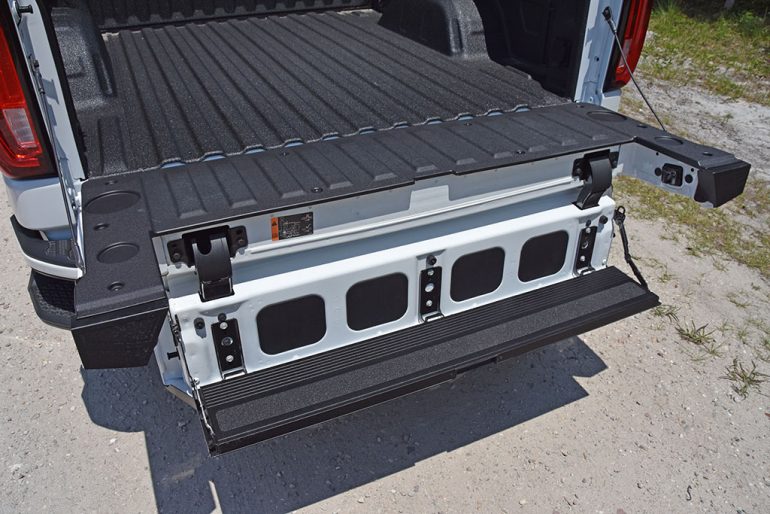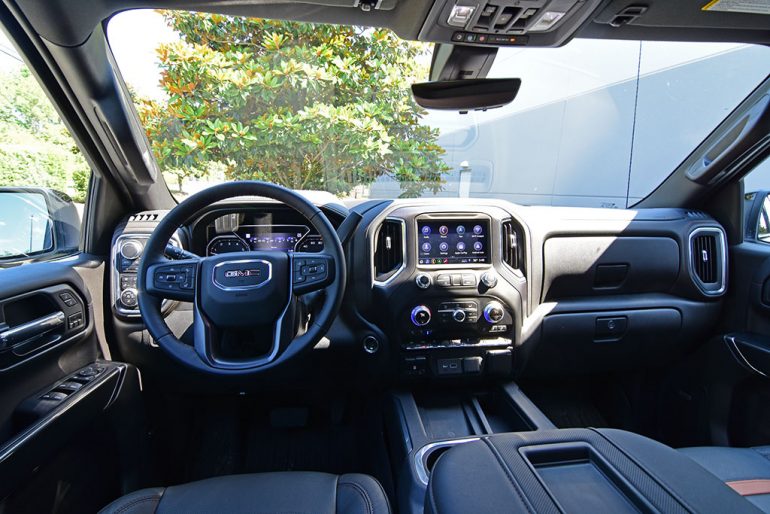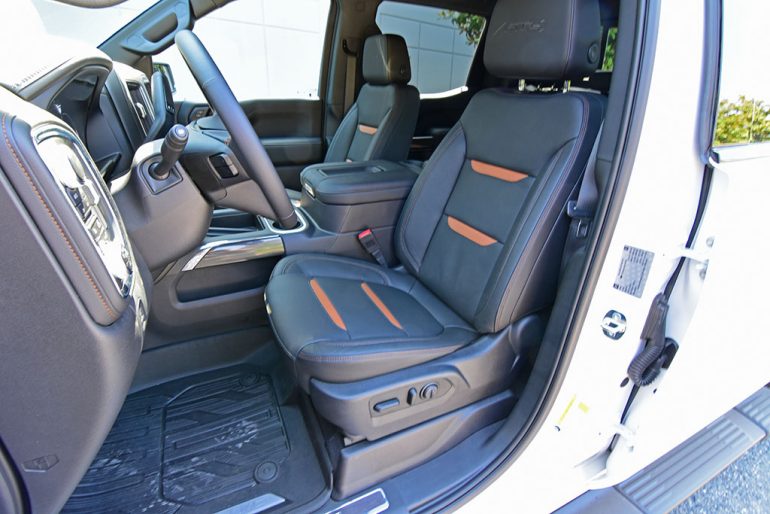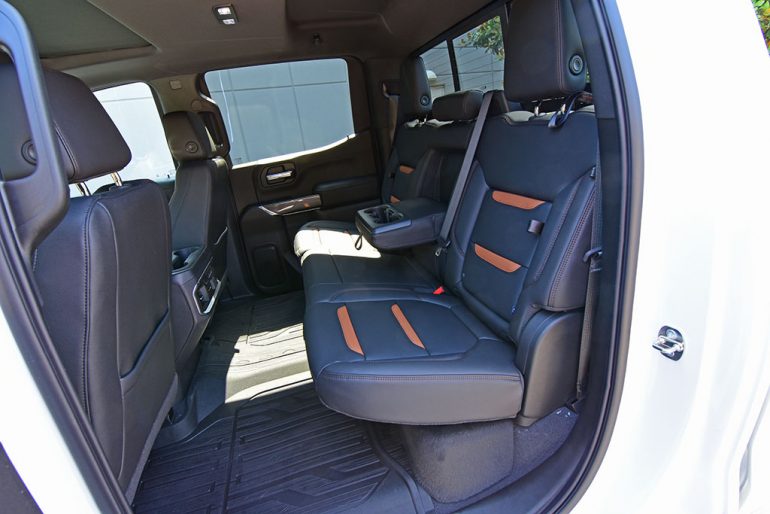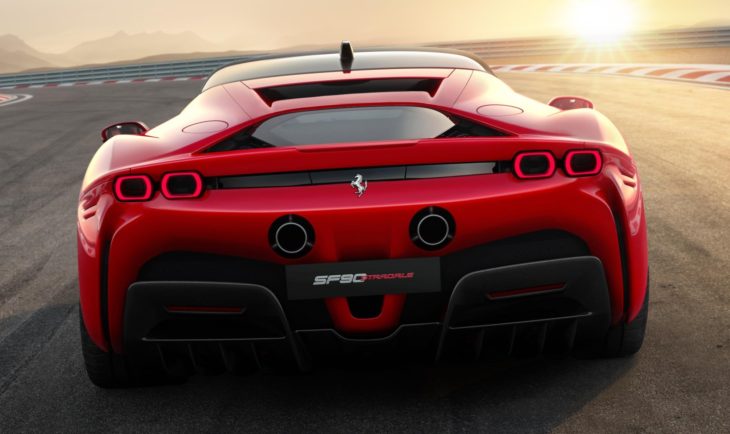 | C $842.83 End Date: Friday Nov-1-2019 1:15:09 EDT Buy It Now for only: C $842.83 Buy It Now | Add to watch list |
Diagnostic Repair parts ,Wiring Diagrams. DTC. TSB,Car, Truck, SUV & Van Acura Chrysler Infiniti Maserati Rolls-Royce Alfa Romeo Dodge Jaguar Mazda Scion Aston Martin Ferrari Jeep McLaren Smart Audi Fiat Karma Mercedes-Benz Spyker BMW Ford Kia Mini Subaru Bentley Freightliner Lamborghini Mitsubishi Tesla Bugatti GMC Land Rover Mobility Ventures Toyota Buick Genesis Lexus Nissan Volkswagen Cadillac Honda Lincoln Porsche Volvo Chevrolet Hyundai Lotus Ram
Friday, May 31, 2019
d2 For BMW 07-06 Front Rear Mintex Brake Discs Pads
2019 GMC Sierra AT4 Review & Test Drive
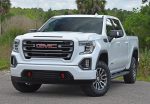
Auto manufacturers, with the benefit of today’s tech and ability to collect several data points on consumers, have wised up to listen to their audience and doing so is paying off in the form of giving the masses more of what they want. GMC trucks have been on the verge of listening to its fan base and with the newest Sierra, they have delivered a specialized trim level, the AT4, one that fundamentally takes the Sierra Denali and adds proper off-roading chops without losing the plush appeal of the Denali.
>> Get the best price on the GMC Sierra from a network of local dealers now. <<
The new 2019 GMC Sierra AT4 brings us the redesigned Sierra truck in a new flavor that combines many creature comforts that were once reserved for the Denali. The full-size GMC Sierra is redesigned for the model year further departing from its distant Chevy Silverado relative.
The new GMC Sierra’s AT4 trim level is a nice addition to give a few extra off-roading traits without losing the creature comforts that are mostly reserved for the Denali trims. The AT4 gets a 2-inch lift, upgraded monotube dampers, and all-terrain (or mud-terrain) 18-20-inch tires all ready to conquer where you wouldn’t dare track your chrome-clad Sierra Denali.
With the trick off-road setup from the lifted suspension and off-roading tires, the Sierra AT4 was surprisingly smooth on the road yet proved to have respected off-roading prowess. Never did the Sierra AT4 feel as if it was unsettled on or off the road with the one exception of a bit too much body bounce going over a bumpy bridge with repetitive surface dips.
Having the option of equipping the new Sierra AT4 with the brand’s 5.3-liter V8 or the more powerful 6.2-liter V8 with 420 horsepower and 460 lb-ft of torque mated to a 10-speed automatic transmission found in my test vehicle, buyers have a bit of wiggle room for pricing based on their needs. With the 6.2-liter power comes on strong with the optional performance exhaust and intake and is more of a confidence in performance without a load as it would be more so hauling just over 1,700 pounds or tow up to its 9,400-pound limit.
Setting the new Sierra AT4 apart from other trucks starts with its best-in-class front head and leg room, which was surreally appreciated with my 6-foot-3-inch frame. There’s ample room in the crew cab Sierra and the cabin is adorned with a good amount of soft-touch surfaces and plenty perforated leather seating surfaces with heated and ventilated front seats. The other feature that stands out in a crowd is the new multifunction tailgate, dubbed the Multipro Tailgate, which manages to be quite the useful feature due to allowing me to have more leverage in reaching and grabbing items out of the bed. The multifunction Multipro tailgate combines a nifty folding action that nearly cuts the gate in half while having a few additional tricks up its sleeve such as a neat step system that makes you feel as if you’re simply climbing “normal” steps up to the bed.
The Sierra AT4 opens up a vast set of options. Many of those benefits of the AT4 trim include a color heads-up display with an off-road inclinometer, a 360-degree high-definition surround vision camera system with several live viewing options when trailering, a rear camera mirror system (live camera feed from the tailgate camera displayed in the review mirror), additional storage found in the rear seatbacks, all LED lighting inside and out, a dual exhaust system, active safety features of forward collision warning with emergency braking and blind spot monitors, front pedestrian braking, rear cross traffic alert, and lake keep assist with lane departure warning. The infotainment unit is of the latest variety from GM featuring the 8-inch touch-screen with many straightforward menu sets with Apple CarPlay and Android Auto integration. The only complaint about the infotainment unit is there was no physical camera button requiring me to go through the home menu screen and swipe until I came to the menu with the camera option. Fumbling through the screen isn’t welcomed to simply bring up the camera when you need it to either park in a tight spot, navigate rough or steep terrain, or get a quick view of your trailer hookup out back.
GMC’s professional grade moniker goes the distance with the new Sierra and the AT4 trim is a special offering that many have been asking for where there isn’t much compromise. Starting at a price of about $50K, the AT4 is a welcomed addition to the many trim levels of the all-new Sierra adding to its appeal to run against the stiff competition. Though, some of the unfortunate aspects of the new GMC Sierra is that its interior doesn’t really push the envelope when compared to many other newly redesigned trucks. Still, the GMC Sierra AT4 gives everyone a step in the right direction for a multipurpose full-sized truck that can be clad with the comforts that were once reserved for upper-level trims. The AT4 is having your cake and eating it too just don’t expect to overindulge because there are a lot of truck offerings out there to compete on the same level.
My new 2019 GMC Sierra AT4 loaded up with several desirable options tested out at a price of just over $64,000 before the currently-offered incentives and dealer discounts.
>> Get the best price on the GMC Sierra from a network of local dealers now. <<





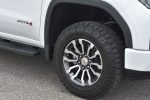
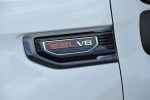
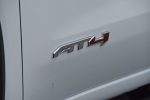
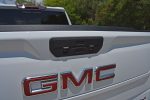
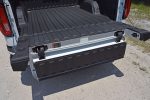
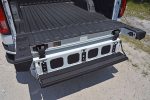
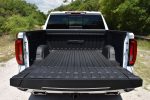
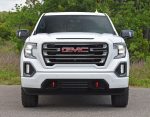
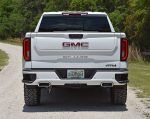
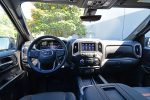
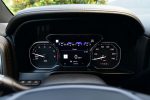
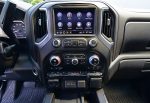
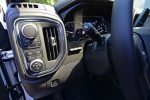
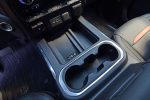
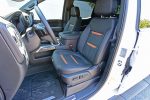
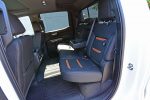
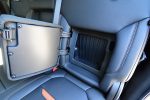
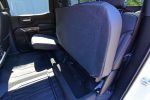
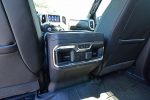
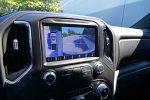
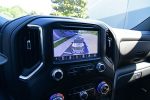
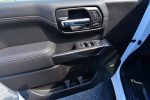
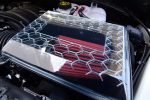
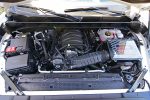
Signed, Sealed, Autonomously Delivered: TuSimple Operates New Kind of Mail Carrier in Self-Driving Pilot
Snail mail has a new set of futuristic, faster wheels.
NVIDIA DRIVE partner and autonomous trucking startup TuSimple has been hauling mail more than 1,000 miles between Phoenix and Dallas as part of a two-week pilot with the U.S. Postal Service.
Halfway through the test, the self-driving prototypes from TuSimple — which is also an NVIDIA Inception member — have been arriving at the delivery hubs earlier than expected.
“In just a week, we’ve been able to operate safe and efficient deliveries autonomously,” said Chuck Price, chief product officer at TuSimple.
The pilot consists of five round trips, each consisting of nearly 2,200 miles along the I-10, I-20 and I-30 corridors. The commonly traveled route typically takes human drivers about 48 hours to complete.
This trip length creates a logistical challenge for shipping companies like the USPS. Regulations limit truckers to 11 hours at a stretch and there’s a growing driver shortage. The American Trucking Association estimates the industry is short 50,000 drivers, a number that is expected to more than triple to 175,000 by 2024.
By incorporating autonomous driving technology into these long-haul trips, shippers can improve efficiency, ease the strain on drivers and deliver more goods faster.
Partnership for the Long Haul
While TuSimple’s trucks can operate on surface streets and highways, for this project it was agreed to start with highway only, with two human operators supervising the system. This type of geofenced autonomous driving is known as Level 4.
Achieving this level of autonomy requires high-performance, energy-efficient compute capability, which enables the vehicle to process sensor data and perceive objects in real time.
TuSimple’s trucks use NVIDIA technology to perform onboard processing as well as to train its deep learning algorithms to recognize specific objects like traffic signs and emergency vehicles.
“NVIDIA is the only company able to deliver the technology we need to achieve these milestones,” Price said.
The Roads More Traveled
The USPS pilot is just the start for TuSimple’s autonomous trucks delivering goods across state lines.
The startup already has 15 contracts with shipping companies and travels routes around Tucson, Ariz. Sixty percent of economic activity in the U.S. lies in the freight that travels along the I-10 corridor, which connects the southwestern states and makes up a significant portion of the current pilot.
With the help of NVIDIA DRIVE technology, TuSimple plans to expand its efficient autonomous trucking technology to every corner of the U.S.
“We wouldn’t be able to do it without NVIDIA,” Price said.
The post Signed, Sealed, Autonomously Delivered: TuSimple Operates New Kind of Mail Carrier in Self-Driving Pilot appeared first on The Official NVIDIA Blog.
Greek passenger car market grows during April 2019
[Excerpt]
The Greek passenger car market has grown by 17.2% year on year
(y/y) during April. According to data released by the Hellenic
Association of Motor Vehicle Importers Representatives,
registrations increased to 12,303 units. This month's figures take
growth in the year to date (YTD) to 3.5% y/y at 38,592 units. In
addition, sales of light commercial vehicles (LCVs) with a gross
vehicle weight (GVW) of less than 3.5 tonnes were up by 13.5% y/y
during April to 610 units. The improvement this month has helped to
maintain registration momentum in the YTD and demand during the
first four months is now up by 7% y/y to 2,507units.
Significance: While it has been a mixed bag in
terms of growth for the Greek passenger car market so far, with
registrations having dipped in March, the general trend is one of
increase. Part of the reason for the improvement this month is
rental fleets adding new cars for the forthcoming holiday season.
However, at the same time, the Greek economy is also continuing a
slow recovery that could be bringing customers back to the market,
particularly as so many have been holding on to their vehicles for
far longer than usual. IHS Markit expects that passenger car
registrations during 2019 will grow by 12.1% y/y to 115,900 units,
although this will still be far below the average between 2000 and
2009. Furthermore, we anticipate registrations of LCVs with GVW up
to 6 tonnes to grow by over 17% y/y to almost 8,400 units.
Things You Need To Know When Buying Your First Car

Passing your driving test is a rite of passage. It represents freedom, and one of the first moves from childhood into being an adult for many people. Younger people generally start off their driving career in a parent’s vehicle, and this is a good way of building up your driving experience before taking the plunge and buying a car of your own. But eventually you are going to get to the stage of needing your own wheels.
There is a huge amount of conflicting information out there about the best way of going about getting a car. Your decision will mostly be based on your personal circumstances, but there are some things you definitely need to know, whatever the situation.
Be Realistic
Although you might have your heart set on a bright red sports car with all the bells and whistles, is this really the best choice for a novice driver? Most of us learn to drive in small, modern cars and getting a similar model to the one you have been learning in will help you make the transition more easily. When you start looking around, the first aspect to consider should be budget. It’s never worth getting into unmanageable debt over a car, however shiny it is. Check online to see what sort of loan the bank might be prepared to offer you, and crunch the numbers on the monthly repayments. Stick to your pre-agreed budget and don’t allow yourself to be sidetracked or seduced by the tempting offers a dealer might be dangling in front of you.
Insurance
The biggest cost for all new motorists is insurance, especially for those who pass their test while still in their teens. The high insurance costs for this age group are purely because they are more likely to be involved in an accident, mostly due to a combination of age and lack of driving experience. Premiums of over £1000 per year aren’t unusual. Choosing an older car with a smaller engine will reduce your insurance costs. Look at insurers which offer a “black box” policy – this is software which sits inside your car and measures your speed and whether you are braking or accelerating rapidly. Drive well, and this data can be used by the insurance company to reduce the costs. Once you are through your first year, accident and claim free, the premiums will start to come down. Consider adding an older, more experienced relative as a named driver on your policy as this can often reduce the costs too. Setting up a policy in their name and adding yourself as a named driver isn’t allowed though. Look into a “pass plus” or Advanced Driver qualification. These courses will build on your existing driving skills, and give you more experience in handling extreme weather conditions, skidding, or driving on motorways. Some insurance companies will offer a reduced price for customers passing these sorts of courses.
Car Tax and MOT
The other two main annual costs you face as a new motorist are car tax and MOT charges. The tax won’t increase just because you’ve only recently passed your test, as it’s based on the type of engine and how polluting it is. If you’re trying to save money, look online to see which types of car attract lower tax. If you’ve already seen a car, you can log into the DVSA website using its registration number to see which tax band it falls into, as well as when the tax is due. You can manage paying for car tax online, and it’s a very simple and straightforward process. Most new drivers don’t buy a brand new car, and if the car you’re looking at is over 3 years old, it will need a MOT test too. Again, you can check online to see when the car’s existing MOT certificate runs out. The test itself isn’t the expensive bit, as prices are capped by the government. It’s the repairs after faults have been discovered which can be expensive. Minimise the risk of being hit by an expensive bill by paying attention to regular maintenance and not ignoring any warning lights on the dashboard.
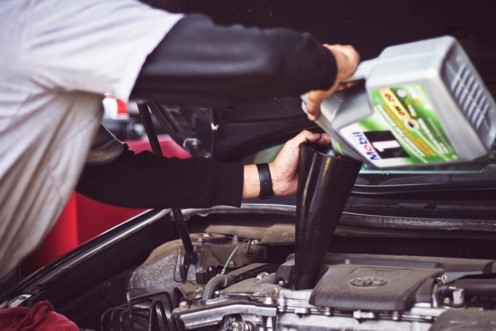
Practice your Haggling
We’re fairly rubbish at haggling in the UK, but it’s a skill you might have to work on if you are thinking about buying a used car. The key to driving a good deal on your car is knowing what it is worth, knowing your budget, and being prepared to walk away. The seller isn’t going to knock some money off the price if you’ve already told them how desperate you are to buy. If you’ve seen a similar car elsewhere at a lower price, ask the seller to match it. Or if you are buying from a dealer, ask them to throw in some extras such as a tank of fuel, car mats or first service free if there’s nothing they can do on the price. Asking for a discount isn’t cheeky and the seller won’t refuse to sell if you’ve asked. Any problems you find on the car could also be a reason to reduce the price, although inexperienced drivers often just prefer to walk away from a car with serious faults.
Know the Law
There are different rules which apply to new drivers, and falling foul of the law could mean losing your licence and having to sit the test all over again. And if you have to disclose that you’ve lost your licence to an insurer, premiums will rocket. More experienced drivers can accumulate 12 points on their licence before it’s taken away from them. For novice drivers – whatever their age when they pass their test – this limit is reduced to 6 points within two years. Speeding or running a red light usually incurs 3 points, so 2 offences and your licence could be removed. If you lose your licence within the first two years, you will have to retake both the theory and practical elements of your driving test.
The post Things You Need To Know When Buying Your First Car appeared first on Motorward.
Thursday, May 30, 2019
Dodge Challenger 2019 Full Review
The Dodge Challenger has now been kicking around without a complete redesign for a decade, yet it actually seems to be getting more popular in its old age. Credit a substantial overhaul a few years ago, constant tinkering, and a yearly roll out of exciting new variants. For the 2019 Dodge Challenger, we welcome the 797-horsepower Hellcat Redeye and R/T Scat Pack Widebody.
However, there's an inherent honesty and unique goodness to the Challenger that allows it to still duke it out with the Ford Mustang and Chevy Camaro – despite those age-old rivals' transformation into something more akin to a sports car. The Challenger, by contrast, is 100% muscle car more concerned with straight-line performance than handling precision. It's also much bigger and practical, lending itself better to daily driver duty. That, plus its distinctive style and diverse model lineup, make it easy to see why the Challenger continues to enjoy such massive success. You can certainly count us among its fans.
What's new for 2019?
We say goodbye to the SRT 392 and Demon, but hello to the 797-horsepower Hellcat Redeye and R/T Scat Pack Widebody. The regular Hellcat gets a 10-hp bump as well as a new "dual snorkel" hood. Further down the Challenger pecking order, you can now get all-wheel drive on the base SXT.Read More : New 2019 Audi A6 Performance Review
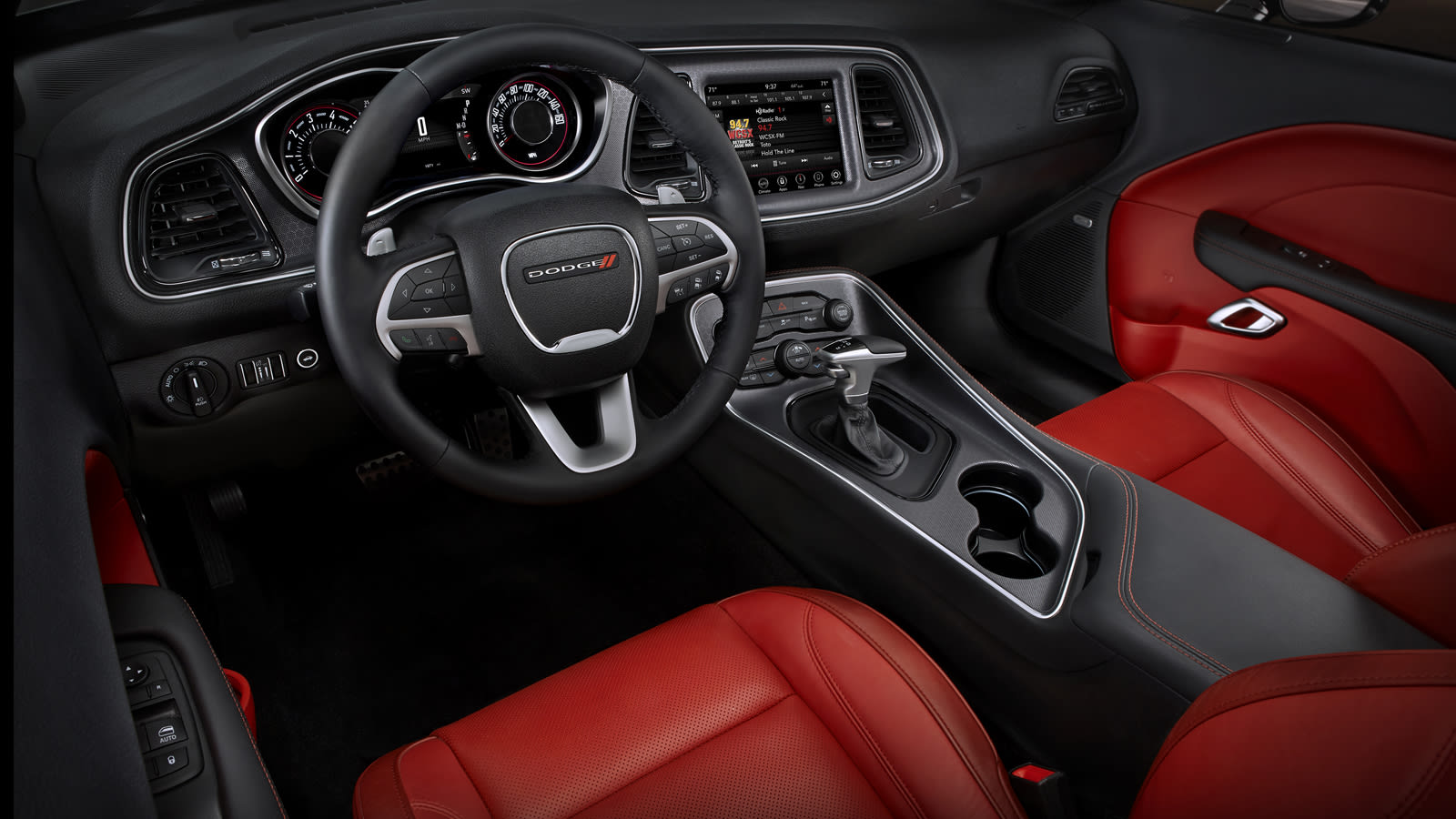
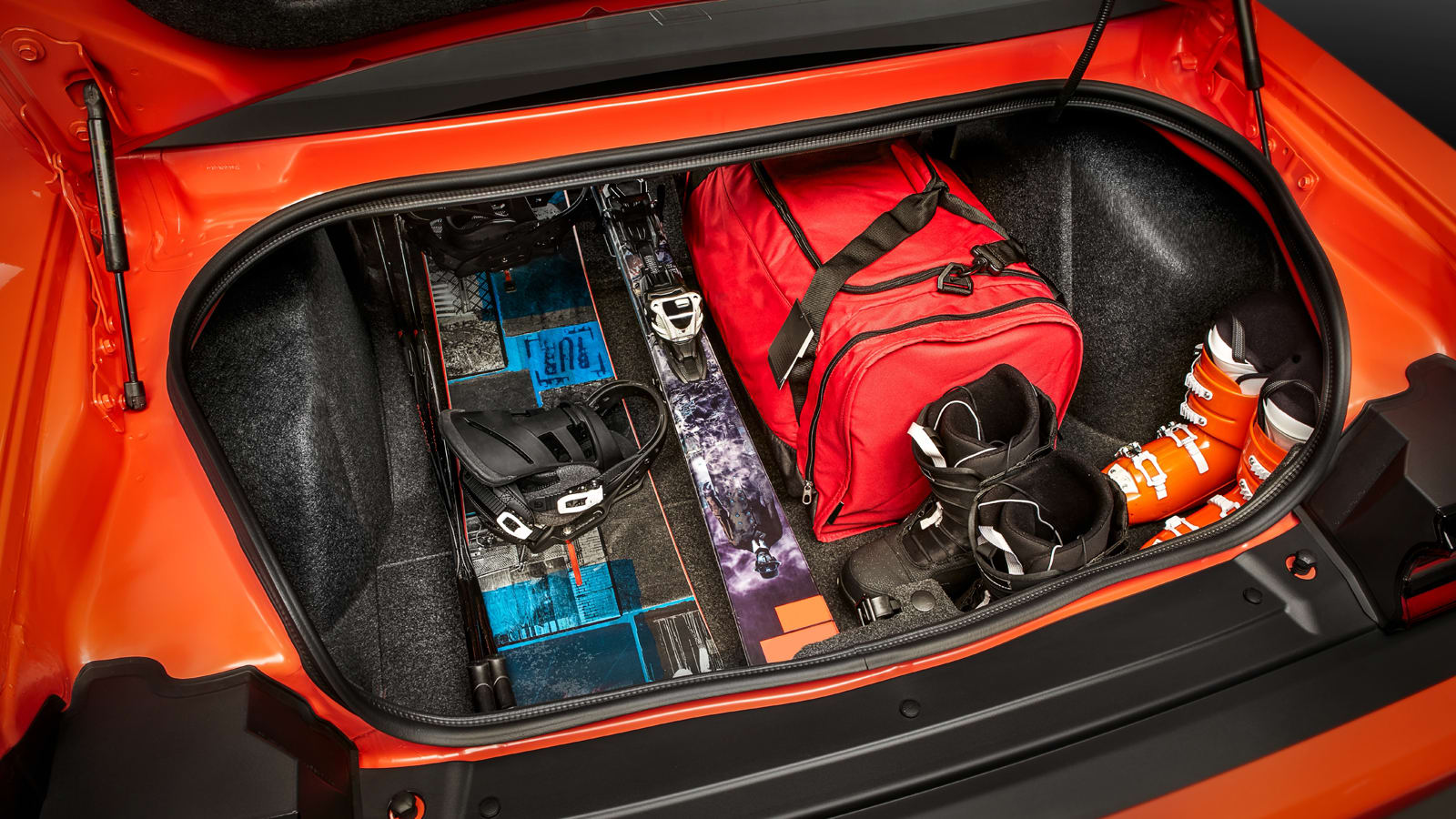
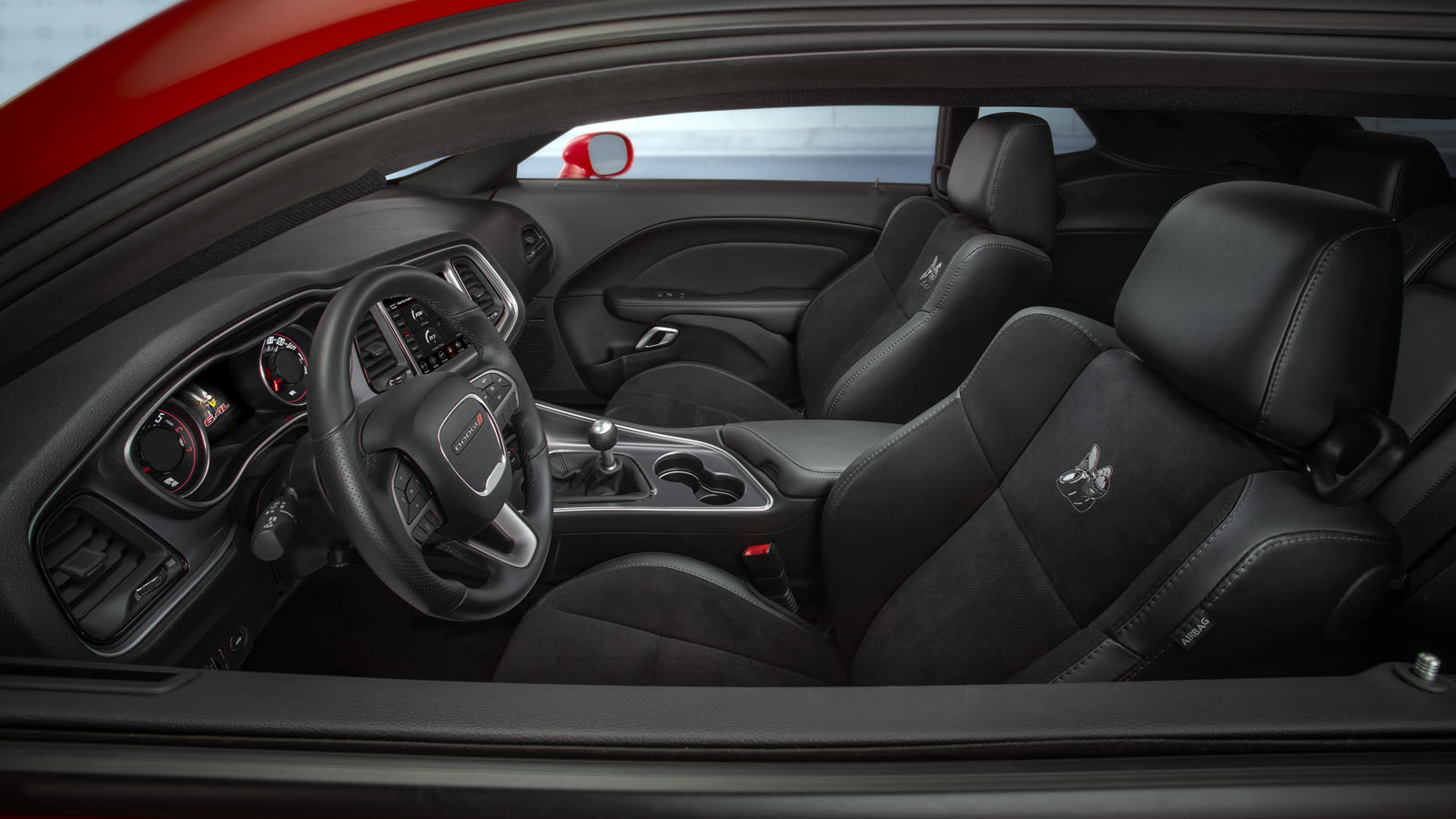
What's the interior and in-car technology like?
The Challenger's interior certainly isn't as characterful and flamboyant as its exterior would suggest. The Mustang and Camaro are more interesting and distinctive inside. Still, there are some interesting design flourishes that spruce things up, from the base trim's standard houndstooth cloth to the two-tone leather choices available as options. Besides, we're not sure how flamboyant you need the interior to be in a car available in electric orange, blue, green and purple paint colors.Furthermore, what the Challenger interior may lack in visual pizzazz, it makes up for with space (see below) and technology. A 7-inch touchscreen is standard, but all trim levels have an 8.4-inch version available as an option or standard. Both are among the easiest to use in the industry, and we prefer the 8.4-inch unit in particular to what's offered by the Camaro and Mustang. Heck, the Ford doesn't even come standard with a touchscreen, let alone the Apple CarPlay and Android Auto that are included on every Challenger.
How big is it?
For a performance coupe, the Challenger is enormous. It's nearly 9 inches longer than a Camaro or Mustang; 3 or 4 inches taller, respectively; and its wheelbase is 6 or 9 inches longer. The most basic Challenger SXT weighs 400 pounds more than a V6 Camaro. While that size is definitely a detriment to the Challenger's handling and straight-line performance, it's a boon for interior space and everyday functionality. Unlike in the Mustang and Camaro, actual adults can fit comfortably in the Challenger's back seat, while its 16.2-cubic-foot trunk would be big for a midsize sedan. The Camaro's is nearly half the size. As such, it's much easier to justify buying a Challenger to be a daily driver.







What's the performance and fuel economy?



What's it like to drive?




What features are available and what's the price?
What's its safety equipment and crash ratings?
The Best Nanocoatings Use This Technology

Nanocoatings have come a long way. Once relegated to the industrial and aerospace sectors, they now dominate surface protection in the auto detailing industry. But don’t take that dominance to mean all nanocoatings (also known as “ceramic” coatings) are perfect. Despite their popularity, most aren’t doing everything they can be to preserve the health of a vehicle.
Most coatings aren’t doing everything they can be to preserve the health of a vehicle.
Automotive nanocoatings aren’t especially good at pushing water off a vehicle’s exterior. Their hydrophobic qualities may bead up water well, but they fail to actually move those beads off of the paint. This leads to a myriad of problems, ranging from etching water spots to poor self-cleaning. Many are not as durable as they could be, either, requiring layer upon layer to protect longer than a few years.
Dr. Beasley’s nanotechnology overcomes these limitations through total surface modification. Rather than simply bonding with the surface, the nanocoating becomes part of it. That fusion gives the surface a nanostructure specifically engineered for minimal sliding angle and high durability. Essentially, it completely changes the surface’s characteristics semi-permanently. In this article, we’ll delve deeper into how this technology works and to what ends it can serve.
Building A Nanostructure
The foundation of Dr. Beasley’s nanotechnology is the three-dimensional nanostructure we mentioned above. After the coating is applied to an area and wiped down, the nanotechnology fuses along microscopic hills and valleys in the surface. This fundamentally alters its characteristics, creating an engineered nanostructure.

As the coating continues to cure, the nanostructure starts to take shape. Like we said earlier, rather than layering on top of the surface, this nanostructure becomes an extension of it—two become one. This total transformation is part of what makes Dr. Beasley’s coatings so durable. Because the surface and the coating are one and the same, there’s no bond to be broken. Durability, however, is not the only advantage of this complete surface modification.
Nanoengineering For Low Sliding Angle
While most nanocoatings bead up water well, they don’t always push those beads off the surface. If a coating can’t actually move water, its hydrophobicity is useless, if not damaging. Water beads remaining on the coating dry into stains that will etch the finish. And if they’re not moving, beads won’t self-clean the surface either. For that to work, bead needs to glide past a contaminant and absorb it, so it’s removed as the bead falls off the edge of the surface.
If a coating can’t actually move water, its hydrophobicity is useless, if not damaging.
This is problem is most obvious with low-volume water sources. Think about it: If you blast a huge amount of water from, say, a pressure washer, water will slide off a coated car pretty easily. But wet a coated car with water from a sprinkler, garden hose or light rain, and you’ll have tons of little beads just sitting around. This is the problem that Dr. Beasley’s nanotechnology overcomes.
By engineering a nanostructure optimized for low sliding angle, Dr. Beasley’s nanotechnology gets even tiny water beads moving on their own. Where other coatings stop at forming tight beads with high contact angle, Dr. Beasley’s nanotechnology takes the next logical step and actually repels those beads away from the vehicle.
Implemented Across All Dr. Beasley’s Coatings
This high performance nanotechnology isn’t just for our “Pro” coatings. All Dr. Beasley’s nanocoatings utilize this very same tech to deliver semi-permanent durability and mobile water repellency. From Formula 1201 all the way up to Nano-Resin Pro, Dr. Beasley’s nanotechnology is present. It’s even utilized in our non-paint coatings, with our film coatings, Plastic Trim Coating, and even Fabric Coating and Leather Lock Pro. Fabric, leather, plastic—this nanotechnology’s surface modification stretches across a wide range of substrates.
All Dr. Beasley’s nanocoatings utilize this very same tech to deliver semi-permanent durability and mobile water repellency.
Keeping Your Finish Healthy
As automotive care professionals, we prioritize the health of your vehicle above all else. Other coatings aren’t taking this into consideration. Their manufacturers only care about making your car shine and bead for the lowest cost to them possible. That’s something we can’t accept and won’t accept. That’s why we’ve poured so much time into formulating a nanotechnology that’s engineered to push water off instead of retaining it. If a coating can’t keep your finish healthy, there’s no point in having it on your car.
WANT MORE?
Stay up-to-date with the latest in detailing knowledge by signing up for our e-mails.
The post The Best Nanocoatings Use This Technology appeared first on .
100522-99621 BRAKE FLUID STABILITY CONTROL SENSOR ORIGINAL ATE 10052299621
 | C $73.15 End Date: Wednesday Oct-30-2019 8:02:28 PDT Buy It Now for only: C $73.15 Buy It Now | Add to watch list |
SF90 Stradale – The Ferrari of Hybrids
So Ferrari gave us all a massive jolt last night by revealing their first-ever proper hybrid car. The SF90 Stradale, as it’s called, introduces a number of significant firsts for Ferrari and takes the world’s most iconic automotive brand into a whole new era. This is the first Ferrari supercar with four-whee-drive, the first with a proper hybrid mode, and the first with an e-drive, zero-emission mode!
That is right, we all lived to witness the day Ferrari went electric. Well, they’ve gone “electrified” to be more precise. But still, it is quite a significant occasion when the sportiest, most hard core of all the auto makers says alright, we’re gonna get into this electric game because that’ where the industry is headed. The cool thing about Ferrari’s shift toward electrification, though, is that they’ve done in a most Ferrari-like way.
What we mean by that is, well, the Ferrari SF90 Stradale has one thousand horsepower! So yeah, electrification for Ferrari is not really about how much more fuel efficient they can make the engine, but rather how much more juice they can get out of it. So they hooked up a 200 horsepower hybrid module between the internal combustion engine and the gearbox – what they call the MGUK (Motor Generator Unit, Kinetic) . Speaking of the internal combustion engine, it’s a V8 unit out of the 488 Pista with as near as makes no difference 800 horsepower.
The students of the hybrid school know that that makes the SF90 Stradale a four-wheel-drive car. That hybrid module consists of no less than three electric motors which make up the full-electric front axle. Needless to say, there is some super clever electronic wizardry going on in side the car’s computer to utilize this system, along with the output of the V8 engine, to make this car a super-sport-oriented 4WD. And, judging by the numbers, it does a pretty good job of it: 0-100km/h in 2.5 sec and 0-200km/h in just 6.7 seconds.
Ferrari SF90 Stradale also introduces a number of new technology and sport features never seen before on any model by the Italian brand. As for the looks, while the SF90 certainly is striking and quite supercar-like, it does look a but underwhelming from some angles, at least for something with a 1,000 horsepower and more technology than a spaceship. Maybe it’s just us, but there is some very 80’s design features incorporated in the styling of this car which, we reckon, the customer base for this car will actually appreciate since most of the people who can afford this thing are in their forties and fifties.
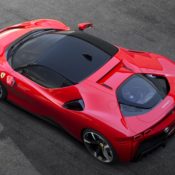
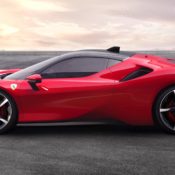
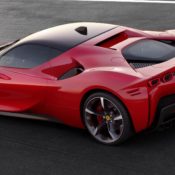
Ferrari SF90 Stradale Driving Modes:
eDrive: the internal combustion engine remains off and traction is entrusted entirely to the electric front axle. Starting with a fully charged battery, the car can cover up to 25 km in this mode. This mode is ideal for city centre driving or any other situation in which the driver wishes to eliminate the sound of the Ferrari V8.
Hybrid: this is the default setting when the car is turned on, in which the power flows are managed to optimise the overall efficiency of the system. The control logic autonomously decides whether to keep the internal combustion engine running or turn it off. If it is on, the internal combustion engine can run at maximum power thus guaranteeing powerful performance whenever the driver requires.
Performance: unlike ‘Hybrid’, this mode keeps the ICE running because the priority is more on charging the battery than on efficiency. This guarantees that power is instantly and fully available when required. This mode is best suited to situations in which driving pleasure and fun behind the wheel are the main focus.
Qualify: this mode allows the system to achieve maximum power output by allowing the electric motors to work at their maximum potential (162kW). The control logic prioritises performance over battery charging.
The post SF90 Stradale – The Ferrari of Hybrids appeared first on Motorward.
Wednesday, May 29, 2019
Car terms to know when trading in

Trading in may be a convenient way to sell your current car and put that money toward the cost of a new one. Knowing the following terms may help you walk into the dealership with the confidence to negotiate a better deal.
Trade-in value
The trade-in value of your car is the amount that your dealer is willing to offer you to buy your vehicle. This amount can be influenced by a number of factors including the vehicle’s age, mileage and condition, demand for such a model, and your location.
Trade-in allowance
Once you have agreed on a trade-in value with the dealer, a trade-in allowance should also be established. The allowance is the amount by which the dealer will reduce the cost of your new car as a result of trading in your old one. This is like a credit from the sale of your existing car that is put toward the purchase of your new vehicle.
Retail value
Retail value represents the amount of money for which the dealer can expect to sell your trade-in vehicle to another party. The dealer will be looking to sell the vehicle for a higher price than they paid for it, which may include the cost of any reconditioning work. Research the market value of your car and take that into consideration when you negotiate the trade in. An alternative to trading in is to sell your car privately, which will typically get you a higher price, although it requires more time and effort.
Loan value
When you get to the stage of purchasing and financing your new car, the loan value is the amount of financing that the lender is willing to provide toward the purchase. This amount can depend on a number of factors including your financial stability, credit score, trade-in amount, down payment, and the conditions of any unfulfilled loan on your current car.
Negative equity, “upside down” and “underwater”
Negative equity, also known as being “upside down” or “underwater” on your car, is when you owe more than your vehicle is worth. It’s a good idea to check whether you have negative equity as it may affect whether you still want to purchase a new car now or wait until you have positive equity. If you decide to go ahead and trade in with negative equity, depending on how the trade-in is handled, it could weaken your position when financing a new purchase.
Rolling over
When trading in an “upside down” car, many times the dealer will offer to “roll over” the outstanding loan balance into the new loan. Rolling over will increase the size of your next loan and the associated financing costs on that note. Your dealer should disclose all the terms of the new loan to you before signing.
Apply for a car loan before trading in
If you’re looking to trade in and purchase a new or used vehicle, RoadLoans may be able to help. Use our auto loan calculators to work out what you may be able to afford, taking into account your trade in and any down payment. Then apply for financing and get an instant decision. If approved, you can shop already knowing how much car you can afford and the terms of your loan.
The post Car terms to know when trading in appeared first on RoadLoans.
